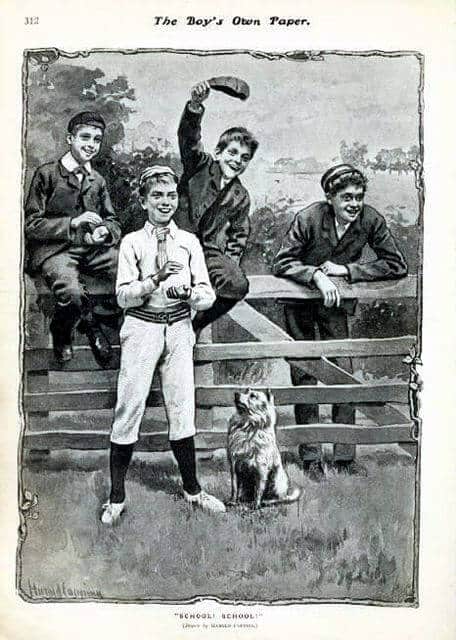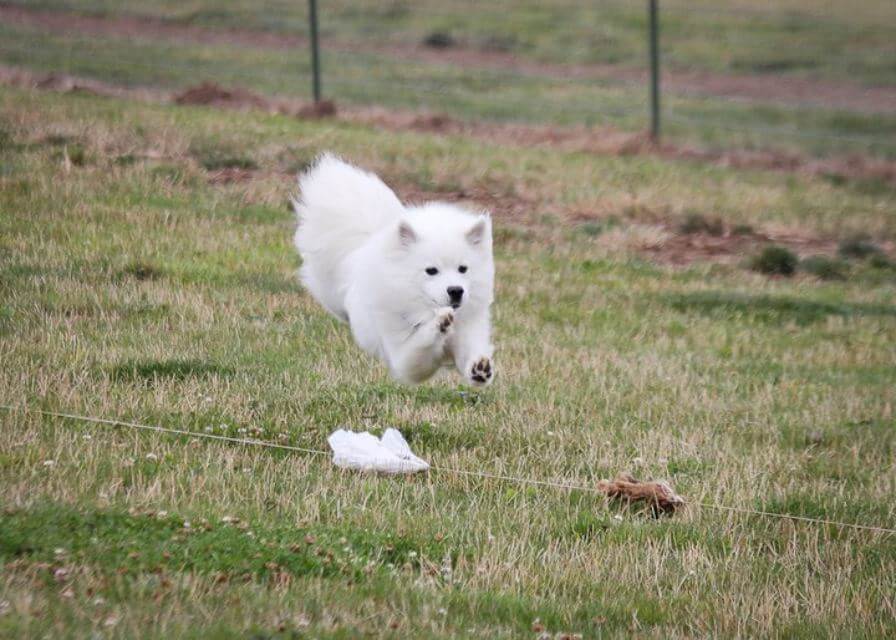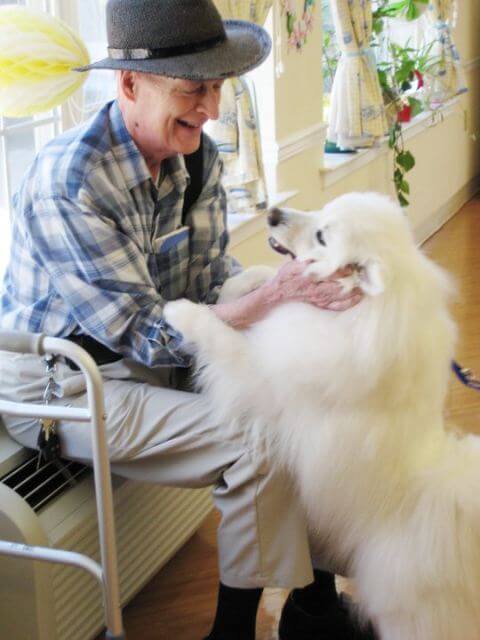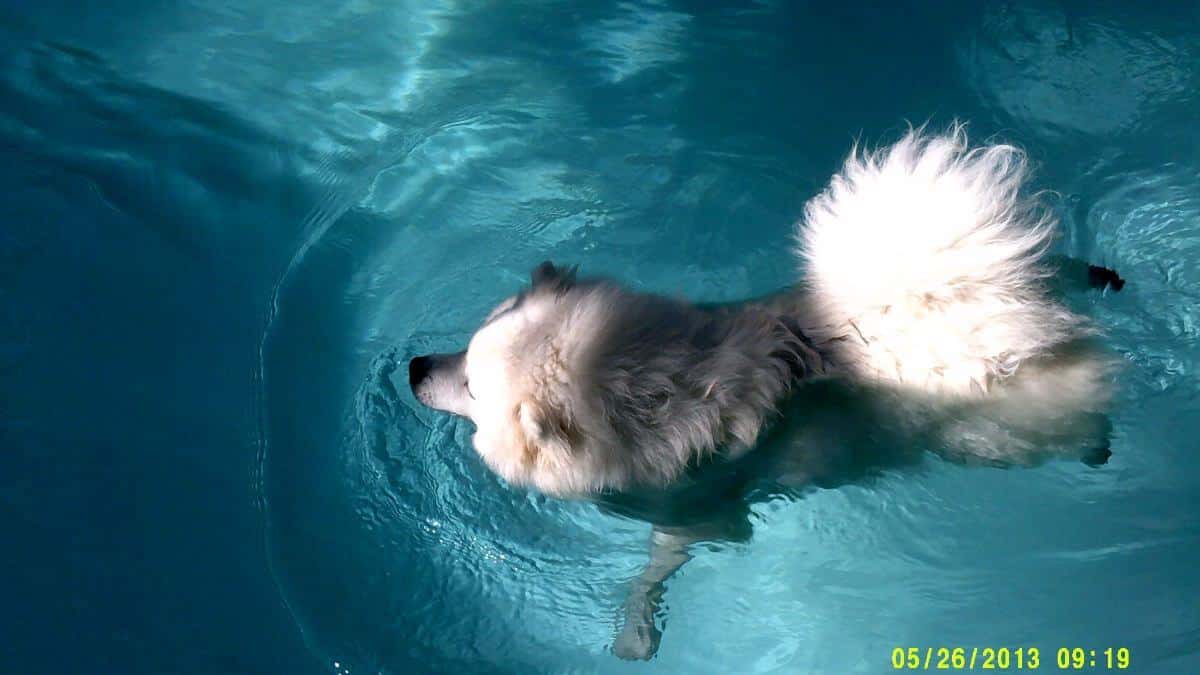This article was originally published in Showsight Magazine, August 2013 issue.
The American Eskimo Dog
The American Eskimo Dog has been in the United States since the 1800s and some evidence has shown it to be here possibly during the 1700s. The breed came to the United States by way of Europe, Germany in particular, with the immigrating settlers. At that time the breed was known just as the ‘Spitz’. The word spitz is a German word that means ‘point’. It meant that the ears of the dog would come to a ‘point’ when the dog was alerted. The term Spitz also referred to a ‘type’ of dog that categorized many of the Nordic breeds. When the anti-German sentiment arose during the World Wars, the term ‘Spitz’ was replaced with ‘Nordic’. The two words Spitz and Nordic are interchangeable. The Eskie was first registered with UKC in 1913, as just ‘Spitz’.
With the anti-German sentiment arising, many of the German breeds were chastised and some of the breeds even had the breed names changed to pull away from the German heritage. The ‘Spitz’ name was changed a few years after it was registered with UKC to American Spitz, then to American Eskimo Spitz and finally in 1926, the ‘Spitz’ was completely taken off of the name. The name ‘American Eskimo’ came from the kennel name of Mr. and Mrs. Hall, who were very well-known breeders at that time. It was thought that if the name was completely changed, no one would know that the breed was ever called a Spitz, nor know of its German heritage. After that time, the history of the breed became quite obscure. In 1969, UKC divided the breed into two varieties, Standards and Miniatures, denoted by weight.
In the late 1970s the standard was changed to denote the two sizes by height. In 1995, AKC recognized the breed as the American Eskimo Dog and divided it into 3 Divisions:
- Standard,
- Miniature,
- and Toy.
Open classes only can be divided. Since that time, there has been extensive research on the breed, its history, where it came from, and the original purpose of the breed. Research has found that the Eskie was bred to be a multipurpose working dog of the farm. It was used in herding, vermin catching, a formidable watchdog, did some hunting, and was an excellent companion for the children. In the United States, the breed was used in the same manner that it was used in Europe. The American Eskimo, being one of the Nordic breeds, has a strong pack instinct. There must be a pack leader within those that it perceives is in its pack.

If the owner does not assume the position of pack leader, the Eskie will. Eskies are fast, agile, strong, and independent. They have a close bond with humans in general and enjoy human companionship. They have a strong desire to please and are quick to learn, but at the same time are not a needy breed. They are an extremely intelligent, thinking breed and can compare themselves to Houdini in escaping if the desire is there. Eskies love the water! They take to water naturally and if they are around water, you will find them in it. They are noted to paddle water out of their dishes, leaving themselves and everything around them wet. They enjoy doing things with you but enjoy their own time to do their “doggy things.” They enjoy playing with other dogs and get along well, although intact male dogs, on the whole, will not get along. Bitches will get along, but there is one now and then that will wish to challenge for dominance. Eskies are a Primitive breed.
This means that many of the natural instincts of the breed are strong. Intact male dogs will breed very early, on their own, without assistance and without your approval. Bitches are as adamant to find a mate when they are ready as the boys are. They will usually breed naturally, without intervention. Eskie bitches are known to be some of the best mothers in the dog world. They will normally whelp without incident, prefer to whelp without assistance, and are extremely attentive to their young. If a puppy happens to crawl behind them, they know. They will get up, pick the puppy up, and put it where it should be.
If left to, they will wean on their own, usually by 8 weeks. They begin when the puppies are between 5 to 6 weeks of age and will have the process completed by 8 weeks of age. There are some mothers that may be a bit slower and others quicker. They do enjoy playing, being with, and teaching their young after weaning. There is a tremendous amount, including canine social behavior, that they will teach their young if left with them after the weaning process has been completed.

Eskies are noted to be one of the relatively healthy breeds, with many living into their late teens. The average lifespan is 14-16. This is, of course, with proper regular veterinary care and barring any accidents or illnesses. The oldest that I know of lived until he was 20 years of age. He was well up until his death. Eskies, being a Nordic breed, have the typical double coat. It is a weather-resistant coat that protects them from the cold, wind, rain, and heat. It is white or white with biscuit and/or cream. This is very striking to their black lips, nose, and eye rims. The length of the coat will vary from dog to dog and males will usually carry more coat than bitches. The quality of the coat is more important than the quantity. They are a strong, powerful dog for their size. They are a trotting breed with a good ground-covering gait. The tail is carried over the back but may be dropped when at rest. Their expression is happy and intelligent.
Eskies, like other breeds, are not without their downsides. Due to their natural protective instinct, they will warn you when a stranger is approaching, some feel too much so. On a scale of 0-10, with 10 being a dog that barks insatiably all the time, the average Eskie is a 5. They can be territorial and fearless when another animal trespasses onto what they perceive is theirs or belongs to their master. Their pack instinct is strong and the human owner must always be the pack leader. Their double coat will shed in late spring and sometimes in the fall. Of course, all dogs shed, so this is not necessarily a downside, more of a fact of dogs in general. Eskies are a moderately active dog, so they do need an outlet for their energy.
They need structure, boundaries, companionship, and a job. Over the years, improvements to temperament, structure, and type have been made. Today the Eskie is a well-rounded dog, confident and still very intelligent. Eskies excel in many avenues including herding, agility, obedience, tracking, lure coursing, therapy, dock dog diving, Frisbee catching, and service/therapy dog work.













